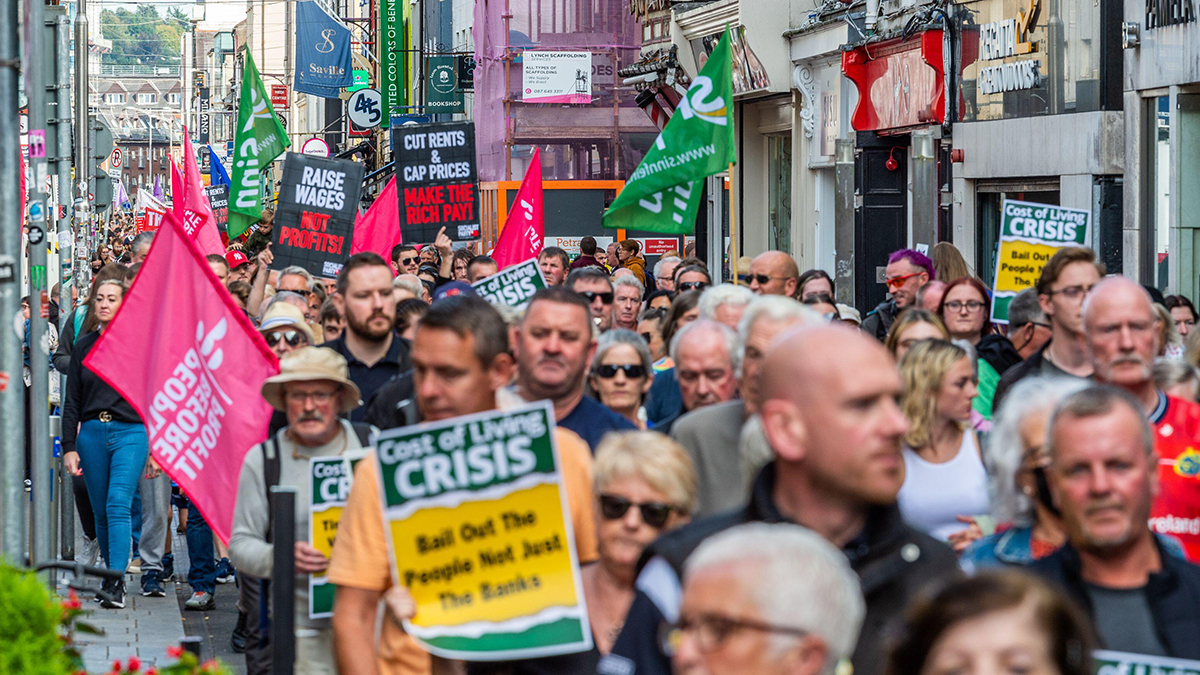Defining ‘unprecedented’ in the world of political violence
‘There have been far too many black swan events for insurers to explain away the next significant event they are not prepared for,’ commercial director at Insurwave, Mark Costin, says
Political violence insurers are facing arguably the greatest level of volatility for decades with an escalation in the number of unexpected events
Unprecedented is a word that seems to be used more and more when it comes to describing political unrest.
This year was meant to be unprecedented because of the number of elections scheduled to happen – including in the UK, France, India and the US among other countries – threatening to create a unique environment for the political violence (PV) landscape.
Between the escalation of violence in the Middle East, an assassination attempt on a former US president-cum-presidential candidate and the worst race riots seen in the UK for more than 10 years, this year does feel unprecedented. The US election in November threatens more violence.
This is not a new problem for the PV market. Over the last 20 years, there have been far too many black swan events – low probability but high impact events – for insurers to be able to explain away the next significant event they are not prepared for, says Mark Costin, commercial director at Insurwave, an insurtech.
“Insurance generally exists to provide indemnity for unforeseen circumstances, and I think where it's come to grief is where it's been caught in a situation where the circumstances are less unforeseen than they could have been, but the market has not been paying attention,” says Costin. “If Vladimir Putin confiscates all of the western-built aircraft in Russia and they don’t see it coming, it’s a big problem.”
 Mark Costin, commercial director, Insurwave
Mark Costin, commercial director, Insurwave
There is more volatility now than in the last 30 years, Costin says. “If you’re a PV underwriter, you are being exposed to market conditions that you very probably have not been exposed to throughout your career.”
Does this mean the PV market has entered a new phase of emerging risks, or is it just business as usual, albeit at a much faster pace of change?
Markets previously seen as benign – particularly North America and Europe – are becoming new flashpoints. Costin says he recently spoke to a US insurer who admitted they were exiting the PV space entirely ahead of the US presidential elections in November. Similarly, the UK has just seen a wave of anti-immigration riots on a scale not witnessed since the London riots in 2011.
Technology, in particular social media, has had a massive impact on how unrest spreads, says Dan Callow, lead underwriter for political violence, terrorism and war at IQUW.
The UK riots were sparked by online misinformation wrongly attributing the murder of three young girls at a dance class in Southport to an illegal immigrant. While initial estimates suggest insured losses from the damage to property and looting by the rioters will be manageable, they were a stark reminder that western democracies are not immune to PV losses.
But, says Callow, in many ways the UK was already primed for the unrest. “For a lot of those rioters, it doesn’t really matter what the reason is. They just want to riot regardless of what the cause is.”
Geopolitical instability
There is an underlying malaise, not just in the UK but elsewhere, that underwriters now need to consider. There are also factors that are not novel. General instability across the geopolitical landscape – particularly noticeable over the last three years – is contributing to an uptick in civil unrest. A hot summer in the UK likely contributed, too. “When it’s cold and wet, you have less issues,” says Callow.
 Dan Callow, lead underwriter for political violence, terrorism and war, IQUW
Dan Callow, lead underwriter for political violence, terrorism and war, IQUW
Despite the additional unrest, Callow argues the market is still well-placed to write business. The drivers of losses for rioting events have stayed constant – retail damage and looting – meaning it is still possible for insurers to manage their exposure adequately. Insurers need to be more aware of their exposure but, Callow says, business can still be written.
“A lot of stuff was lumped together for a lot of years and now people are actually analysing their portfolios better and realising they’ve got too much or haven’t priced enough,” he says.
Callow has a similar view on the international front. The October 7, 2023 attack on Israeli civilians by Hamas changed the dynamic and, since then, there has been less limit available for the Middle East region, but the PV market still has a huge amount of capacity. Pricing is also still reasonable, especially when compared to, for example, natural catastrophe perils, such as hurricanes in the Gulf of Mexico.
Callow is not convinced, however, that the market as a whole has a clear view of its aggregate limit in the Middle East region. “I think [the market] would be surprised how big those numbers are,” he says. While country-by-country markets manage their exposures, the risk landscape has changed and there is a real possibility of a regional conflict that could trigger policies in multiple geographies.
It also depends on which countries are in the mix. Saudi Arabia and the UAE, for example, carry a lot of limit. While they are not imminently at risk of being drawn into conflict, Callow says, “at some point, if something escalated, they’re going to have to make a call on where their alliances are, and that could change things”. If a regional war breaks out involving multiple countries: “that’s a potential huge event”.
There has also been a change in the nature of some conflicts, with PV, war and terror cover starting to overlap. Harry Simpson, head of PV and terrorism at broker BMS, says he is increasingly seeing clients in conflict or high-risk zones looking for abandonment cover – protection for property or assets that are left abandoned because of political violence but are undamaged. Abandonment cover is widely available in the political risk market, but not necessarily in PV.
This issue came to the fore most recently when the Taliban regained control of Afghanistan and a number of security guards with insurance cover abandoned assets.
 Harry Simpson, head of political violence and terrorism, BMS
Harry Simpson, head of political violence and terrorism, BMS
“You had insureds sitting there who potentially purchased an encompassing political violence, including war, policy for a number of years, but they didn't actually have a loss that could be indemnified,” Simpson says.
Over recent months, insureds in Yemen and Lebanon, for example, have been looking for such cover. “I think we will see clients very much in the emerging world and territories of known war or potential war wanting that coverage,” says Simpson.
Lack of flexibility
PV policies also tend to lack the flexibility that the war market has. War policies usually have 48 hours to review and then seven days to withdraw cover or ask for additional premiums if a threat escalates. This means PV underwriters have to be “much more aware” of the projected longer-term risk they are taking on, Costin says, and how to access the information they need. “If you’re in a world where events are moving very quickly,” he adds, “you need to issue contracts that have the ability to change in relatively short order.”
That does not mean pulling out of markets, but about having conversations with insureds about where exposures might be changing or increasing, and how this might change pricing or wordings. Costin explains: “That’s not an unreasonable position for them to take, otherwise customers would not be seeking to insure themselves against those events.”
The PV market also needs to be more proactive, much like the cyber market has been towards risk mitigation. When an insurer becomes aware of a threat to global intelligence, they ought to share the implications of this with the insured so they can act on the risk. Costin notes there has been an influx of managing general agents into the PV market, bringing a more tech-forward approach. They are more likely to take a transactional view, which will likely feed into the wider market dynamic, he adds.
“Insurance is about relationships, banking is about doing deals and is a much colder environment,” he says. “The insurance market needs to take a slice of the banking cake.”
Callow is more confident the market can handle the changing threat landscape. “It’s a marketplace so people have different views on risk,” he says. “It comes down to a company’s appetite. Some people like the volatility and, if they don’t, they’ll write a different attachment point.”
There is nothing unprecedented about that.



